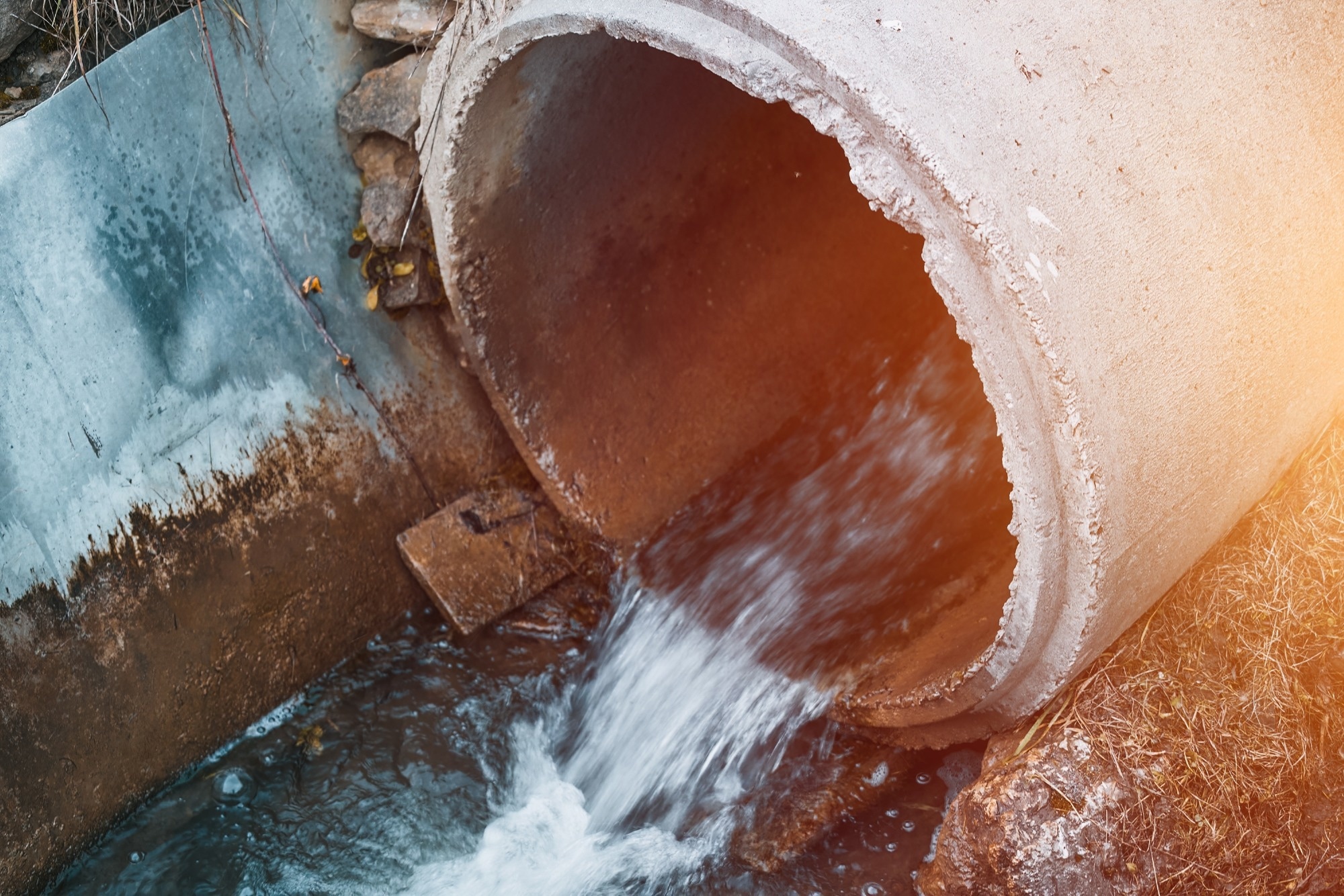Researchers have developed a promising cement alternative for sewage infrastructure by using water treatment sludge to enhance resistance to microbiologically influenced corrosion.
 Study: Evaluating microbiologically influenced corrosion in alkali-activated materials incorporating alum sludge. Image Credit: alexgo.photography/Shutterstock.com
Study: Evaluating microbiologically influenced corrosion in alkali-activated materials incorporating alum sludge. Image Credit: alexgo.photography/Shutterstock.com
A recent study published in the Journal of Building Engineering investigates alkali-activated materials (AAMs) incorporating alum-based water treatment sludge (AWTS) and ground granulated blast-furnace slag (GGBS). The findings show these materials can significantly improve durability in sewer environments while reducing environmental impact, particularly under attack from sulphur-oxidizing bacteria (SOB).
Background
Concrete has long been the material of choice for sewage pipes due to its strength, affordability, and availability. Yet, its vulnerability to microbiologically influenced corrosion (MIC), a degradation process driven by microbial activity, raises serious concerns about long-term durability. This has led researchers to explore AAMs as potential alternatives.
AAMs are produced by activating aluminosilicate-rich industrial byproducts with alkaline solutions, resulting in binders that exhibit strong resistance to acid attack. Their durability and lower carbon footprint make them well-suited for corrosive environments like sewers. Traditionally, fly ash (FA) has been a key precursor in AAM production, but its availability is declining due to the shift toward cleaner energy.
To address this, the study in question evaluates AWTS, a byproduct of drinking water treatment that offers high pozzolanic reactivity, as a potential replacement for FA in AAMs. The focus was on determining how well AWTS-based AAMs withstand MIC.
Methods
AWTS was collected from a local water treatment facility and processed to improve its reactivity. After drying at 105 °C for 24 hours, the sludge was calcined at 800 °C for two hours and ground to a fine powder (around 75 μm) to enhance its performance during alkali activation.
Commercially sourced GGBS served as the base precursor. The alkaline activator - a 1:1 weight ratio of sodium hydroxide and sodium silicate - was used to produce mortar mixes with a precursor-to-activator ratio of 1.0 and an aggregate-to-precursor ratio of 2.75. The control mix contained 100 % GGBS, while the experimental mixes replaced 20–60 % of GGBS with AWTS.
Compressive strength tests were performed, and paste samples were exposed to SOB (sourced from real sewage) to simulate MIC conditions. FTIR, XRD, and SEM analyses were used to assess chemical changes, microstructure, and degradation mechanisms.
Results and Discussion
The inclusion of AWTS was found to significantly enhance MIC resistance. By lowering free calcium levels in the matrix, AWTS helped minimize gypsum formation and slowed acid-driven deterioration. Mortars with 20–40 % AWTS retained over 50 % of their compressive strength after exposure to SOB.
Notably, the 20 % AWTS mix showed better strength retention under MIC than under chemical acid corrosion alone - suggesting a distinct advantage in biological environments. In contrast, the 60 % AWTS mix performed worse under MIC, likely due to its higher porosity and lower mechanical integrity.
While chemical acid corrosion encouraged the formation of silica-rich gels that could act as a barrier to sulfate intrusion, this layer was less effective under MIC. SOB were able to colonize the surface, continuing to generate sulfuric acid and further degrading the matrix. GGBS-only samples, with higher calcium content, were particularly vulnerable to this cycle.
Lower porosity in the 20–40 % AWTS mixes appeared to play a key role in resisting bacterial intrusion and slowing MIC progression. However, the 60 % AWTS samples, which had higher porosity, showed greater acid penetration and more extensive strength loss.
After 56 days of MIC exposure, all mortar samples displayed increased water absorption and pore volume. The control mix (100 % GGBS) experienced the most severe degradation, while blends containing 20–40 % AWTS showed a clear improvement in maintaining microstructural integrity.
Conclusion
The study demonstrates that AWTS, when blended with GGBS in AAMs, can significantly improve resistance to MIC, offering a promising path toward more durable, sustainable sewage infrastructure. The 20–40 % AWTS mixes in particular stood out for their ability to retain strength and limit porosity after prolonged exposure to SOB.
Still, the findings are based on controlled lab conditions. Future research will need to validate these results in real-world sewer systems and examine the scalability of the mix design to ensure practical, consistent implementation.
Journal Reference
Duan, W., Liu, Y., Chow, C. W. K., Keegan, A., & Zhuge, Y. (2025). Evaluating microbiologically influenced corrosion in alkali-activated materials incorporating alum sludge. Journal of Building Engineering, 106, 112682. DOI: 10.1016/j.jobe.2025.112682, https://www.sciencedirect.com/science/article/pii/S2352710225009192
Disclaimer: The views expressed here are those of the author expressed in their private capacity and do not necessarily represent the views of AZoM.com Limited T/A AZoNetwork the owner and operator of this website. This disclaimer forms part of the Terms and conditions of use of this website.